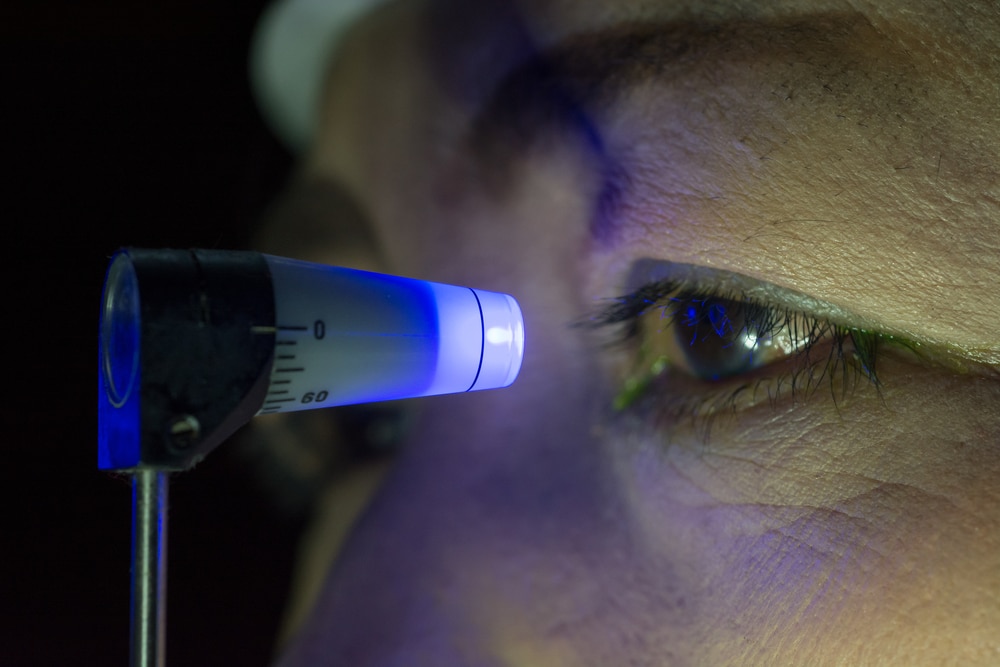During a routine eye exam, your eye doctor likely performs a quick and painless test to measure the pressure inside your eyes. Also known as intraocular or eye pressure, this measurement is key to detecting vision-threatening diseases like glaucoma.
Like most aspects of eye health, early detection and treatment are vital to preventing the progression of eye conditions. Keep reading to learn more about eye pressure, including how it’s tested!
What is Glaucoma?
Glaucoma refers to a group of eye diseases caused by damage to the optic nerve, which is responsible for carrying visual information from the eye to the brain. It is often associated with increased pressure inside the eye, also known as intraocular pressure or IOP.
As IOP increases over time, it can damage the optic nerve and lead to vision loss. Glaucoma tends to develop slowly and without warning signs at first.
That’s why regular eye exams to check eye pressure are important, especially for those over sixty or with a family history of glaucoma. Catching and treating glaucoma early is key to preventing permanent vision loss.
How is Eye Pressure Tested?
There are a few methods eye doctors use to measure eye pressure. The most common approach used to check eye pressure during routine eye exams is called tonometry testing.
Tonometry involves applying a small amount of force to the outer surface of the eye, specifically, the transparent front layer known as the cornea. As the device contacts and flattens a tiny area of the corneal surface, specialized sensors in the instrument are able to calculate an accurate reading of the pressure levels within the eye.
Before doing tonometry, eye doctors will often use eye drops to gently numb the surface of the eyes so you are comfortable. Though it involves making direct but gentle contact with the eye, the test is very quick, taking just a second or two, and completely painless.
The tonometry test results provide your eye doctor with a reliable measurement of IOP. By establishing a baseline pressure early on and checking it regularly during eye exams, eye doctors can detect abnormal pressure changes before damage occurs.
How Do Eye Doctors Diagnose Glaucoma?
In addition to checking your eye pressure, your eye doctor will give you a comprehensive eye exam to check for early signs of nerve damage from glaucoma. This includes testing your peripheral and central vision, examining the inner eye structure with special imaging techniques, and evaluating the appearance of your optic nerve.
If the exam shows evidence of optic nerve changes along with increased eye pressure, your eye doctor can diagnose glaucoma. They may also do a visual field test to map any vision loss areas.
Getting regular exams with an eye doctor at Frantz EyeCare is the best way to detect glaucoma in its earliest stages when treatment is most effective at slowing disease progression.
What Treatments Are Available For Glaucoma?
Glaucoma cannot be cured, but it can be controlled and vision stabilized with treatment. Eye drops are typically the first treatment used to lower eye pressure.
They need to be taken daily on an ongoing basis. Eye surgery may also be done to improve fluid drainage and decrease eye pressure.
Treatment plans are tailored for each patient depending on the severity and how well their eye pressure responds. Regular exams, usually every six to twelve months, allow your eye doctor to monitor your vision status and make adjustments when necessary.
Early detection combined with consistent treatment are keys to maintaining lifelong usable vision when faced with a glaucoma diagnosis.
Is it time for you to have your eye pressure tested? Schedule an appointment at Frantz EyeCare in Fort Myers, FL, today!




